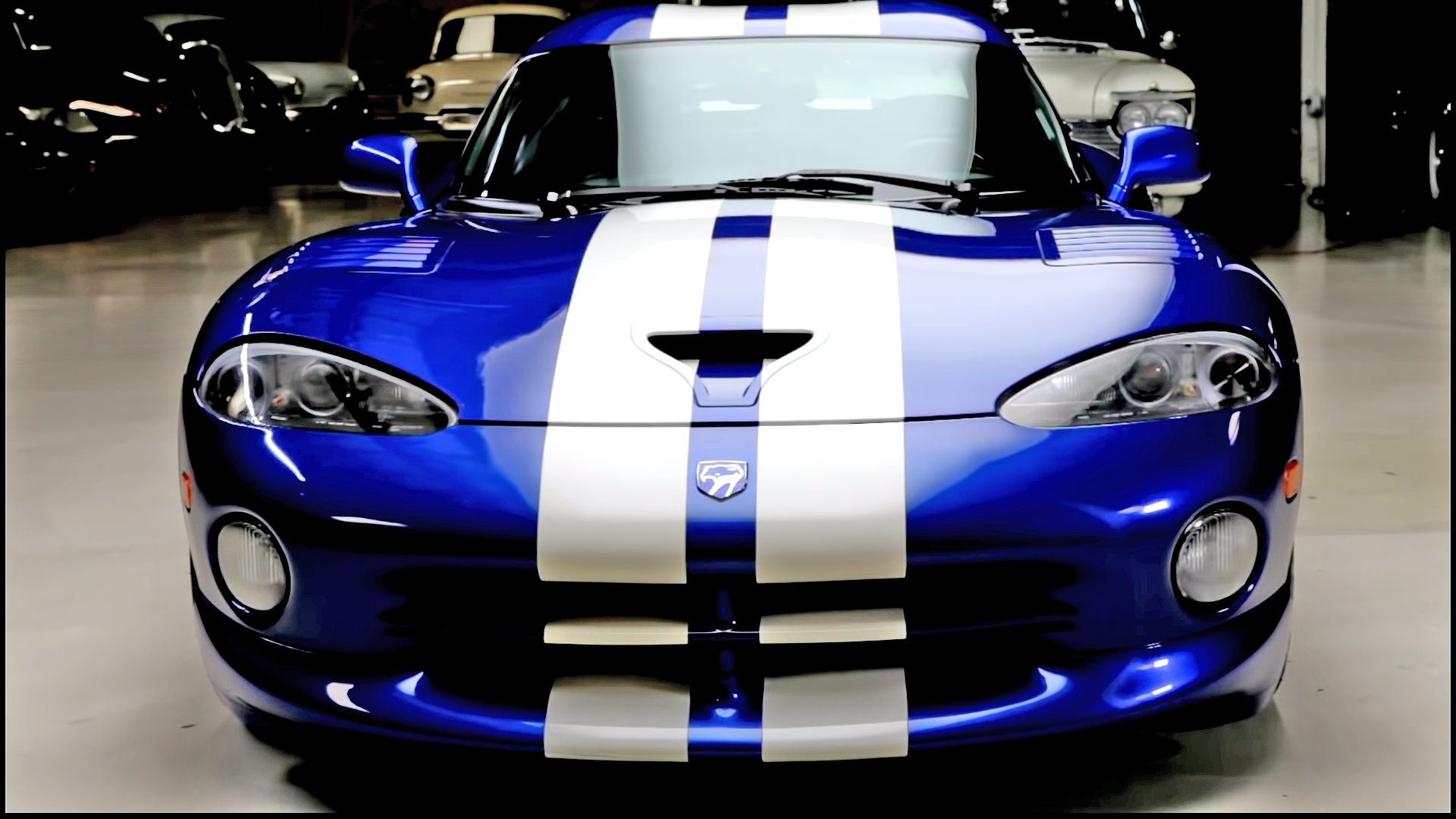

After wowing the world with its concept at the 1989 Detroit Auto Show, Chrysler boss Bob Lutz set up Team Viper, an 85-member-strong crew tasked with creating a new halo car for a brand then known for its minivans. This product was to be a V10-powered torque monster inspired by Carroll Shelby and Peter Brock’s legacy that would not only put America back on the high-performance sports car map, but also force GM to step it up a notch with its Corvette development.
Unsurprisingly, in 1993, a certain enthusiast called Jay Leno got the second series-production Viper RT/10 finished in black after the first one landed at Chrysler design chief Tom Gale. Leno is a huge fan of his side-piped roadster to this day, yet can’t help to admit that parking a sports car with no windows or roof can be troublesome around Los Angeles.




After the second-generation SRII Viper RT/10 launched in 1995 with a removable hardtop and rear exhausts designed for both comfort and reduced back pressure, Dodge followed up in late 1996 with its most powerful Viper to date, the 450-horsepower GTS coupe. Under its double-bubble roof, 1996’s Indy 500 Pace Car featured plenty of upgrades, including air-conditioning, power windows and locks, an adjustable pedal box, a driver airbag, and even onboard diagnostics.
Bob Lutz didn’t need to guess that the only car in Jay Leno’s garage featuring onboard diagnostics software was his 1994 McLaren F1 (chassis #15). Chrysler’s chief executive simply felt the need to give him a call, only to explain how the 1996 Viper GTS is a completely different car compared to Leno’s 1993 RT/10, featuring “50 more horsepower and bla-bla-bla.” The comedian was easy to convince about a new American sports car in Daytona Coupe colors, and even went to Chrysler’s Conner Avenue Assembly to see his GTS getting built and signed by the team.

In the 25 years since, Jay Leno put 10,700 miles into his Viper coupé, which turned out to be a practical, perfectly reliable two-door offering 450 horsepower and 490 pound-feet of torque deadstock, sent through an honest six-speed BorgWarner T56 manual. Strong yet silent air-conditioning, nice seats, locking doors, a practical hatch, and ample storage space for two. It’s no surprise that Leno is a huge fan of first-generation original designs, and the 1996 Viper GTS is certainly not far from the 1989 concept in terms of size and design, even if it’s miles ahead in daily usability and reliability.
With no new Viper in sight and certainly no hope for a new V10, a clean 1996 Viper GTS will only get more desirable.

Got a tip? Send us a note: tips@thedrive.com